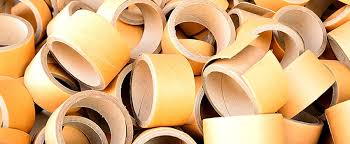Paper cores have a variety of applications in industries ranging from textiles to construction. These cylinders support materials like yarn, plastic film, paper, tape, and carpeting during production, transport, and storage. Understanding how to use them for winding and unwinding processes helps inform purchasing decisions. Here are six uses for these cores:
1. Textile Winding
Cores can be used in textile manufacturing to wrap yarn, thread, and other fabrics. They also offer a sturdy inner form to protect delicate textiles from getting tangled, dirty, or damaged. Workers unwind materials from the core for smooth processing. The cores simplify handling, storage, and shipping of raw textile materials. They can also help satisfy the needs of the textile customer.
2. Paper Printing
Large rolls of paper and label stock wound onto cores are easy to install on machinery for printing. The central shaft aids alignment and even unwinding. Printing on materials secured by cores can eliminate wrinkles and prevent damage that degrades efficiency. Cores also simplify handling during loading and unloading across your facility.
3. Tape Structure
The adhesive tape industry also uses tubes for structure. Cores create a shape for tape rolls during production. With adequate equipment, workers can pull solid tapes from cores. This stability keeps wound tapes compacted tightly. Manufacturers convert tape cores to the requested dimensions to serve as components in your products.
4. Building Solutions
Building contractors also utilize paper cores as forms when constructing concrete pillars, columns, and walls. This helps shape and supports wet concrete until it hardens, at which point you remove and discard these expendable cores. Some can be saved and used for other projects. Builders use cores as disposable yet durable solutions for forming concrete structures across projects. Suppliers offer cores in diameters and lengths customized for your architectural plans.
5. Carpet Transport
Paper carpet cores let flooring manufacturers roll vinyl, linoleum, and carpet around a structure more easily. The cores prevent flooring materials from creasing, wrinkling, or jostling during storage or shipment. Cores can be tailored to the width of your flooring products. The choice of wall thickness depends on your desired strength. Choosing carpet cores that complement your production and logistics systems can extend the lifespan of your flooring goods.
6. Retail Wrapping
Retailers use large rolls of wrapping paper and film like ribbons wound on paperboard tubes. The centralized core keeps these packaging materials organized for easy access. These provide a shape for storage, plus a spindle for dispensing at high volumes. Switching between wrapping paper designs is also easier when workers remove rolls from cores. They streamline order fulfillment in e-commerce and dropshipping operations as well.
Invest in Quality Paper Cores Today
In addition to the other practical uses, craft hobbyists can upcycle paper cores into creative projects. The cardboard cylinders become structures for models, toys, sculptures, and other visual art. Cores are also focal points for design embellishments like painting or decals. Organizations that receive excess cores from industrial or retail partners can turn these commercial waste products into artistic resources through reuse. The versatility of cores supports learning and innovation in education. Partnering with a paper core supplier today
- How Bail Bondsmen Help Families Navigate the Legal System
- Maximizing Productivity in Your Office Space Through Thoughtful Design
- The Benefits of Working With an Attorney for Your Car Accident
- How to Choose the Right Lighting for Kitchen Remodeling
- Lifestyle And Cost Of Living Insights for Retiring In Panama
